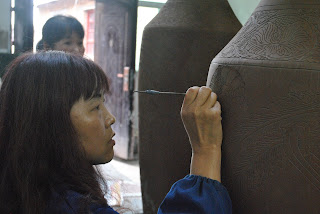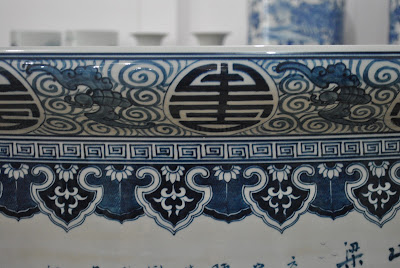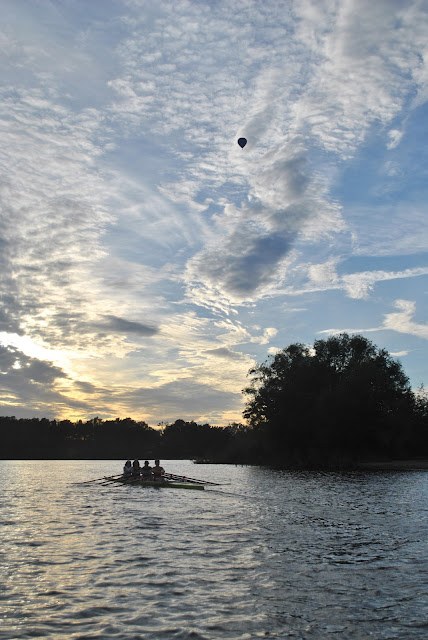For my last trip around China, I tagged along on a Pottery Workshop trip to Xi'an. It was the perfect final trip, and I was so impressed with Xi'an. Xi'an, like many cities in China, has a very long history. It was founded as the capital of the Han Dynasty in 202 BCE.
However, the very first dynasty of unified China, the Qin Dynasty, had its capital in a city very close by, and so the first emperor of the Qin Dynasty, named Qin Shi Huang, built his mausoleum not far from present-day Xi'an.
This mausoleum is where the famed terracotta warriors can be found. According to Wikipedia, the emperor had built "over 8,000 soldiers, 130 chariots with 520 horses and 150 cavalry horses." Keep in mind that these are all life-size, and you get a sense of how impressive this is.
The pits in which the soldiers were buried are still being excavated, and you can easily see why - they're huge!
The soldiers are all individualized, and even bear different markings of rank and body positions to show their function (foot soldier, cavalry, archer, etc.)
Of course, this was a pottery-focused trip, so in addition to the terracotta warriors, we saw lots of museums. The history of Chinese ceramics is incredible, and incredibly long, so there was plenty to see. A lot of the pieces were really surprising - we normally think of the traditional blue and white porcelain when we think of Chinese ceramics, but there is so much more!
Above is a Tang Dynasty bowl, that looks an awful lot like it was tye-dyed... This "tye-dye" glaze includes lead though.
Besides museums, we also caught a glimpse of Xi'an's still extant (but small) pottery-making community. We visited an adorable village which housed lots of potters, similar to Jingdezhen.


Of course, we also saw some sights that weren't directly pottery-related. We took a bike ride around the city wall...

... and saw the Great Mosque of Xi'an. The Mosque, founded in 742 CE, looks very similar to a Chinese temple, until you look closely at the details.


The last place we visited was a bit less well known. It's another mausoleum, of the Han emperor Jingdi. Like Qin Shi Huang, he built himself a huge mausoleum, which includes the mausoleum for his empress. The site itself was beautiful, and inside were more terracotta warriors!
These terracotta warriors, as you can see below, are different from their earlier, and more famous, counterparts. Each one was made, anatomically correct, but miniature. Each little statue was about 2/3 feet tall. When they were made, each one would have had wooden, posable arms and would have also been fully clothed.
You can see that in addition to the warriors, there was also plenty of replicas of livestock.
In addition to having a great museum and huge, beautiful grounds, many of the unexcavated pits have rose gardens growing on top.
Chances are good that my blog entries for the foreseeable future will be about travel destinations in the US. I'm finally back.















































